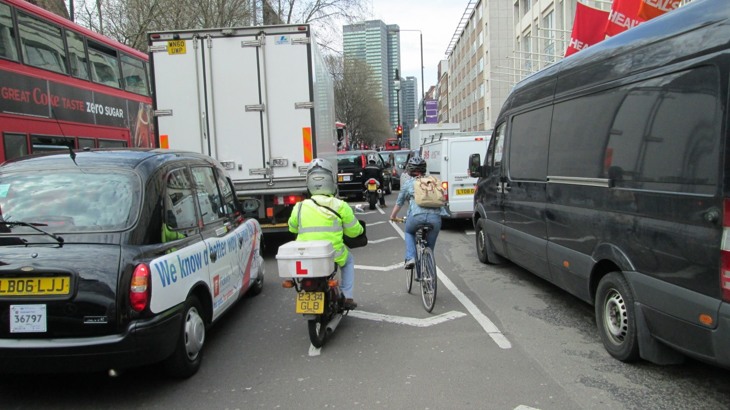For decades there has been a huge imbalance between the amount of money invested in supporting travel by car and the level of investment that supports walking and cycling.

Investment in walking and cycling in England (excluding London) is currently 2% of transport spending in 2016-21, equivalent to just £7 per head.
At the local level, we know what to do to increase levels of walking and cycling. We need safe, high-quality spaces and routes. Networks that connect people with different needs to the places they want to get to.
We need an environment that welcomes people who are walking and cycling. And a transport network that supports healthy, clean choices.
This transport network uses space better, prioritises better choices above damaging choices, and penalises the most damaging ones.
And this can’t be achieved without significant investment.
Freeing city space
If we were to reimagine a busy city street, we would consider it ridiculous to assign the most space to the fewest people (the carriageway wider than the pavement).
To prioritise the least efficient means of moving the most people (a street can move far more pedestrians per hour than it can people in cars). And to prioritise the most damaging form of movement above the least (people trying to cross the road have to wait for the cars to stop before they can cross).
This is a well-rehearsed narrative. But the reality of reversing planning priorities that have, through high investment, been ‘locked-in’ to the planning system over several generations is proving particularly challenging.
Reallocation of road space is fiercely contested. Prioritising buses (let alone pedestrians) above cars provokes a furious response. And trying to promote shared-ownership of space, where cars might wait to cross rather than pedestrians waiting, presents all sorts of challenges.
Creating people-friendly space to meet our everyday needs
An environment that welcomes people who are walking and cycling makes it clear that they take precedence.
Barriers are to vehicle movement rather than to person movement. Controls hinder vehicles rather than hindering people. More space is assigned to the majority of people rather than to the minority travelling at low density. And facilities are geared towards active travellers (benches, cycle parking, play areas, etc).
Places become spaces that people welcome the chance to move through at a leisurely pace, rather than wanting to pass through quickly and encased in metal boxes.
A further crucial consideration is that of connecting people with the places they want to go to.
We all have different needs at different times. There are profound differences between travel patterns of different demographic and socio-economic groups.
For example, while a superhighway-type cycle route may suit those demographic groups heading for a city centre, the needs of parents are more likely to be best served by a local network that links them safely to their regular destinations.
Both are crucial ingredients in providing an alternative to the current situation where places are set up to suit car drivers, often to the exclusion of most other groups.
Making safe, high quality and connected environments for people walking and cycling requires a significant uplift in the amount of funding available to support walking and cycling.
Investment will support positive outcome in terms of health and reductions in emissions that drive climate change and lead to poor air quality. Money wisely invested now will be repaid many times over.






